#Tom Walkinshaw Racing
Text




Jaguar XJ220S, 1993, by TWR. In January 1993, Tom Walkinshaw Racing (TWR) and Jaguar Sport presented the XJ220C to compete in the GT class (Group N) of FIA motor sport. They also announced the XJ220S, a limited-production, road-going version, to comply with homologation requirements. It had carbon fibre bodywork and a 680hp twin turbo V6. Only 6 were made
#Jaguar#TWR#Jaguar XJ220S#Jaguar XJ220S by TWR#Tom Walkinshaw Racing#1993#homologation#twin turbo#V6#mid-engine#limited edition#carbon fibre#lightweight#Jaguar XJ220
216 notes
·
View notes
Photo
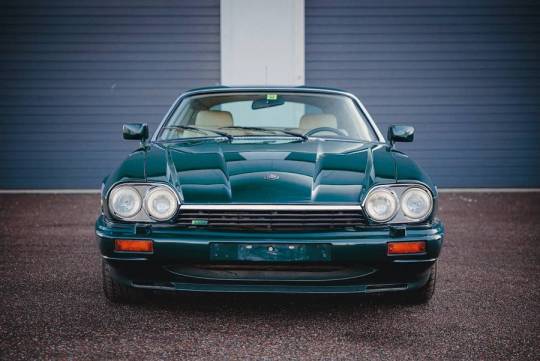


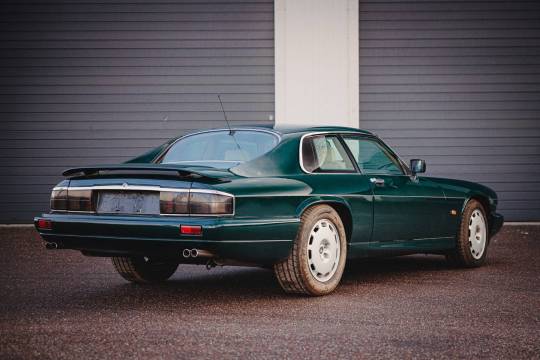
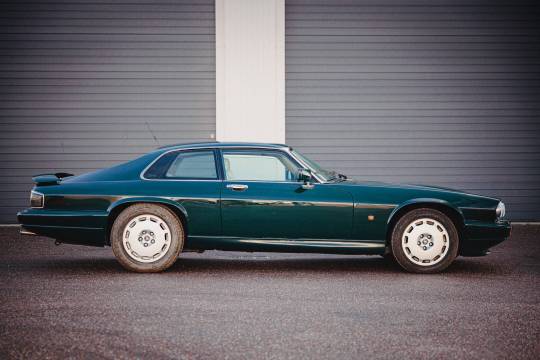
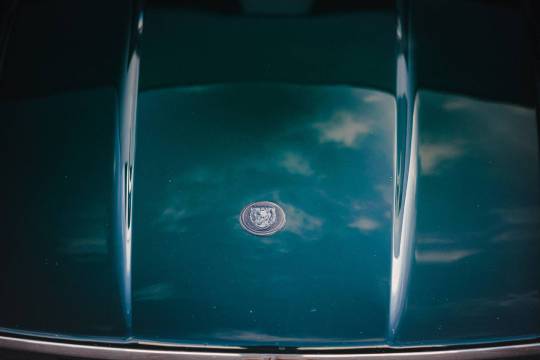
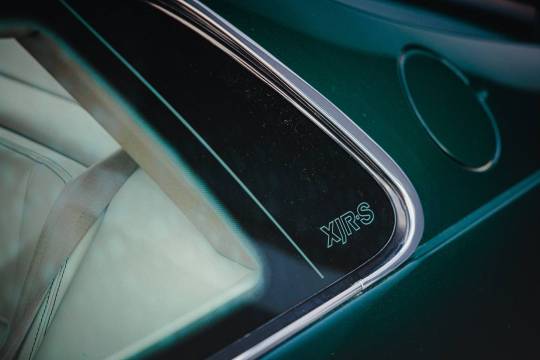

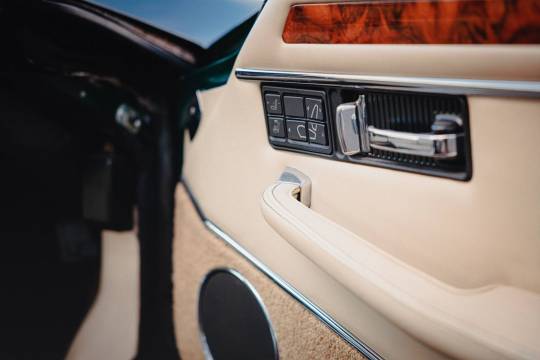

Jaguar XJR-S V12 ("timber!").
When the Jaguar XJR-S was launched in August 1988, Jaguar was riding the crest of a reputational wave, having just claimed its 6th Le Mans victory and, in 1987, won the World Sportscar Championship.It was a genuinely bespoke model produced by Jaguar Sport - a high-performance wing jointly owned by Jaguar and the Tom Walkinshaw Racing Group. Initially powered by a 5.3-litre V12, the engine was upgraded in 1989 to a bespoke 6.0-litre unit with Zytek fuel injection. It was good for 334 bhp and 160 mph.Boasting a new forged steel crankshaft, forged alloy pistons, modified air intake and a dual exhaust system, the engine was unique to the XJR-S and was only phased out once Jaguar introduced its own 6.0-litre V12.The XJR-S proved to be an immediate winner with contemporary journalists. In a Motor Sport magazine group test, the Jaguar handed out a humiliating spanking to a Porsche 928 GT, a BMW 850i and a Ferrari Mondial T – no mean feat.While the XJR-S may have looked pretty much like a standard Jaguar XJR coupé, virtually every mechanical part was unique. Each car left the factory as a hand-built unit from Jaguar Sport’s manufacturing facility at Bloxham, which had attained legendary status as the skunk-works unit that built the seminal XJ220.
63 notes
·
View notes
Text
My Top 10 Iconic Le Mans Legends
This weekend, the 24 Hours of Le Mans race will celebrate its 100th anniversary, and with 62 cars from different classes gathering around in this centennial milestone as well as special guest stars, rest assured that the 100th running of the 24 Hours of Le Mans is going to be historical indeed.
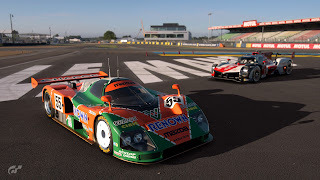
As the whole world is bracing for the centennial running of the legendary endurance race that pushes carmakers over the limit in the name of speed and survival, it's time for me to jot down my top ten iconic Le Mans legends.
10) GR010 - Following the success of their LMP1-class TS050, which propelled Toyota Gazoo Racing to three straight overall titles at Le Mans, Toyota created this competitor to the new Hypercar class, which replaced the LMP1 class after the 2020 season. Complying with Hypercar regulations, the GR010 is powered by a 3.5L V6 twin-turbo engine mated to an electric motor that powers the front wheels, making it a 4WD machine where the petrol engine powers the rear wheels while the electric motor takes care of the front, a drastic change compared to its LMP1 predecessor. Toyota defended its Le Mans success in the new Hypercar class with the #7 Toyota Gazoo Racing car emerging as the winner of the 24 Hours of Le Mans for two years, making it its fifth win in a row.
9) Toyota TS050 - In the 2018 24 Hours of Le Mans, being the only manufacturer-backed LMP1 racer competing in its class, the #8 Toyota Gazoo Racing TS050, piloted by Formula 1 driver Fernando Alonso, Formula E driver Sebastien Buemi, and Kazuki Nakajima, made a historic victory at Le Mans, marking the second time a Japanese carmaker won Le Mans since the legendary Mazda 787B and the first time a Japanese driver became part of the Le Mans-winning team. In 2019 and 2020, with the latter being the final year for the LMP1 era, Toyota emerged victorious in Le Mans.
8) Jaguar XJR-9 - Built in collaboration between Jaguar and Tom Walkinshaw Racing, Jaguar's Group C competitor is powered by two V12 engines; a 7.0L for the WSPC and a 6.0L for IMSA GTP class. Both produce 760PS of power and 828Nm of torque, while mated to a 5-speed March/TWR manual gearbox, making the XJR-9 capable of hitting a 245mph top speed. A Silk Cut-sponsored Jaguar XJR-9 won the 1988 24 Hours of Le Mans with Jan Lammers, Johnny Dumfries, and Andy Wallace behind the wheel.
7) Peugeot 905 - The V10-powered Peugeot 905 cemented the French carmaker to the list of Le Mans winners when it won the legendary endurance race twice in 1992 and 1993.
6) Audi R18 TDi - The Audi R18 TDi is known as the only diesel-powered racing machine that conquered Le Mans three times from 2012 to 2014. Not only that, it has dominated two WEC championship titles from 2012 to 2013. Such achievement proves that diesel is king until dieselgate came and most carmakers are ditching diesel-powered engines for good.
5) 919 Hybrid - In 2014, Porsche returned to LMP1 endurance racing with their 919 Hybrid and although it didn't fare well in its first run, which led to its 3rd place finish at the constructor's championship at the 2014 WEC season, it came back with a much fighting chance and because of such will power, it managed to win not just Le Mans but also three WEC seasons on the trot from 2015 to 2017. Porsche has left the LMP1 racing program after their three-win streak with the 919, only to make a comeback in the Hypercar class with the 963 racing machine.
4) Sauber-Mercedes C9 - As part of the Sauber-Mercedes partnership, this Group C prototype was introduced in 1987 and its first success can be traced back to the 1989 24 Hours of Le Mans, where the #63 C9 driven by Jochen Mass, Manual Reuter, and Stanley Dickens, achieved a win. During qualifying for Le Mans, the C9, with its Mercedes-Benz M119 HL 90º 5.0L Turbo V8 engine with two KKK turbos, achieved a top speed of 248.0 mph (400 km/h) at the Mulsanne Straight of Le Mans.
3) 917K - The Porsche 917K is known as the short-tail version of the legendary 917, a sports prototype race car, and it gave Porsche their first overall wins at Le Mans for two straight years since 1970. Thanks to such success, it even gained a starring role in the Le Mans movie starring Steve McQueen.
2) 787B - Built as an improved version of the 787, it features the same R26B 4-rotor Wankel engine as its predecessor which produces up to 690HP of power. Aside from that, it features carbon-fiber bodywork which resulted in a light, rigid body structure and other improvements. In the 1991 24 Hours of Le Mans endurance race, Mazda sent two 787B machines with the race-winning #55 car driven by Bertrand Gachot, Johnny Herbert, and Volker Weider. The 787B not only became the first Japanese-manufactured race car to win Le Mans, but it's also the first-and-only rotary-powered race car to win the said endurance race.
1) GT40 Mk. II - Ford's trial-and-error process of creating a racing machine that can crush Ferrari in Le Mans is nothing more of an act of revenge from the Blue Oval following Ferrari's rejection to become part of the Ford empire. Armed with the 7.0L V8 engine producing 485HP of power and mated to a 4-speed gearbox, the GT40 Mk.II from Ford delivered a stunning podium sweep at the 1966 24 Hours of Le Mans race, more than enough to crush Ferrari into it. Such achievement has been profiled in the biopic movie Ford vs. Ferrari.
In this centennial running of the 24 Hours of Le Mans, will it be a milestone for Toyota Gazoo as it's seeking a three-peat in the Hypercar class? Will the return of Ferrari in Le Mans crush Toyota's dreams for a three-peat? Find out as this legendary endurance race unfolds this Saturday, June 10th. Don't miss it!
3 notes
·
View notes
Text
TWR Supercat: El legendario Jaguar XJ-S revive con este espectacular restomod
Representa la perfecta combinación entre el legado de TWR, la innovación del diseño moderno y la potencia desenfrenada.
Tom Walkinshaw Racing (TWR), fundado por un Tom Walkinshaw con una historia profundamente arraigada en Jaguar, ha vuelto a la escena con un proyecto emocionante que cautiva a los amantes de los clásicos reinventados. Bajo la dirección de Fergus Walkinshaw, hijo del fallecido fundador del equipo, y su socio Tom Kane, TWR ha resucitado el icónico Jaguar XJ-S en forma de un impresionante restomod:…

View On WordPress
0 notes
Text
New Post has been published on بخش آشامیدنی فلات قاره
مطلب جدید انتشار یافت در https://falateghareh.com/fa/%d8%ae%d8%b7%d9%88%d8%b7-%d8%aa%d9%88%d9%84%db%8c%d8%af-%d8%a2%d8%a8-%d9%85%d8%b9%d8%af%d9%86%db%8c-watsons/
خطوط تولید آب معدنی Watsons
خطوط تولید آب معدنی Watsons
خطوط تولید آب معدنی Watsons
واتسونز واتر Watsons Water، یکی از بزرگترین تولید کنندگان آب معدنی خالص در جهان می باشد.
دفتر مرکزی این شرکت در هنگ کنگ قرار دارد.
Watsons Water، بخشی از A.S. Watson Group، بزرگترین خردهفروش بینالمللی بهداشت و زیبایی در جهان، می باشد.
این شرکت کارخانه های تولیدی در هنگ کنگ، پکن، شانگهای و گوانگژو دارد.
محصولات آن در سراسر منطقه آسیا و اقیانوسیه از جمله سنگاپور، مالزی و تایوان مصرف می شود.
حمایت
شرکت واتسونز اسپانسر تیم ها و رانندگان زیادی در (Macau Grand Prix) بوده است.
آنها اولین کار خود را در سال 1985 انجام دادند،
زمانی که (Gianfranco Brancatelli) در مسابقه (Guia) با یک خودرو (Tom Walkinshaw Racing Rover 3500) برنده شد
و سپس سال بعد زمانی که (Andy Wallace) در مسابقات فرمول سه قهرمان شد.
در سال 1990، شرکت واتسونز یک خودرو (فورد سیرا RS500) را که توسط قهرمان BTCC (راب گراوت) هدایت می شد، حمایت کرد.
در سال 1991، Watsons دوباره با Schnitzer شریک شد و سه خودرو (BMW M3) با مشخصات DTM، ارسال کرد
که دوباره توسط Pirro ،Winkelhock و برنده سابق Roberto Ravaglia، هدایت می شد.
آنها همچنین یک (GTR R-32) را که توسط راننده مسابقهای معروف استرالیایی (مارک اسکایف) هدایت میشد، حمایت کردند.
شرکت واتسونز مجدداً در سال 1993 با سه ویژگی جدید خودرو (Super Touring BMW 318i) که توسط پیررو، وینکلهوک و استیو هدایت میشدند، از Schnitzer حمایت کرد.
در حالی که مشخصات (Super Touring) روند جدید جهانی در خودروهای تور بود، مسابقه Guia همچنان از مشخصات DTM در سال 1993 استقبال کرد و در نتیجه واتسونز با حمایت (318i) تنها توانستند در رتبه دوم (Winkelhock) و سوم (Pirro) پس از M3 چارلز کوان در DTM قرار بگیرند.
#خط تولید آب معدنی#سود خط تولید آب معدنی#ماشین آلات خط تولید آب معدنی#هزینه راه اندازی خط تولید آب معدنی
1 note
·
View note
Text
Torna il marchio Twr con supersportive costruite su misura
Uno dei nomi più famosi dell’engineering automobilistico sportivo, quello della TWR fondata nel 1975, ha annunciato di prepararsi per iniziare ‘una nuova vita per nuove generazioni di clienti’. La Tom Walkinshaw Racing di Newbury nel Berkshire (Regno Unito) concentrerà la sua attività sulla costruzione di automobili su misura utilizzando – si legge nella nota – lo stesso spirito, la stessa spinta…
View On WordPress
0 notes
Text
Arrows three-seater F1 car to run in Adelaide at former grand prix venue | 2023 F1 season
Visitors to this year’s Adelaide Motorsport Festival will not only be able to pay for a ride in a Formula 1 car, but take a friend along too.
The three-seater Arrows AX3 will be at the event, which takes place in March the weekend before the Australian Grand Prix in Melbourne. The Adelaide Motorsport Festival runs on a shortened version of the street circuit which held the country’s round of the world championship on 11 occasions from 1985 until 1995.
Fans will be able to pay for a ride in one of the two passenger seats in the car, which are positioned either side of and behind the driver of the machine.
The AX3 was originally powered by a three-litre, 670bhp V10 engine fitted into a chassis adapted from the A20 raced by the team in the 1999 F1 season. At its launch in January 2001, Arrows claimed the car could reach 355kph (221mph), although more recent descriptions of its performance with its current 3.5-litre Hart V10 engine suggest a figure closer to 330kph (205mph).
The Tom Walkinshaw-run team folded the year after the AX3’s launch due to mounting debts and other financial problems. Multiple tubs were made for the three-seater, and at least two full show cars were used on tracks at the time for paying fans. They have since been sold, and the car in action in Adelaide has spent several years based in New Zealand doing demonstration runs there.
The Adelaide Motorsport Festival runs from March 25th-26th and will feature demonstrations of heritage Formula 1 cars, other open-wheel racers, touring cars, bikes and more. Cars will be pitted against each other in pairs in a Super Sprint contest around the track.
Adelaide held Australia’s world championship round until 1995
Advert | Become a RaceFans supporter and go ad-free
Don't miss anything new from RaceFans
Follow RaceFans on social media:
2023 F1 season
Browse all 2023 F1 season articles
via RaceFans - Independent Motorsport Coverage https://www.racefans.net/
#F1#Arrows’ three-seater F1 car to run in Adelaide at former grand prix venue | 2023 F1 season#Formula 1
0 notes
Text

1986 Lynx Eventer
Jaguar XJS converted to an estate by Lynx
This particular one also spent time at TWR being modified to 380hp








41 notes
·
View notes
Photo



4 notes
·
View notes
Photo




Mazda Montrose TWR Coupé, 1979. For the UK market the first generation Mazda 626 was rebadged as the Mazda Montrose. Tom Walkinshaw Racing prepared a version of the Montrose Coupé though the modifications were cosmetic, the cars retained the standard 2 litre Mazda powertrain.
#Mazda#Mazda 626#Mazda Montrose#Mazda Montrose TWR Coupé#TWR#Tom Walkinshaw Racing#1979#special editon#pillarless hardtop#hardtop coupé#UK Market#rear wheel drive
188 notes
·
View notes
Photo





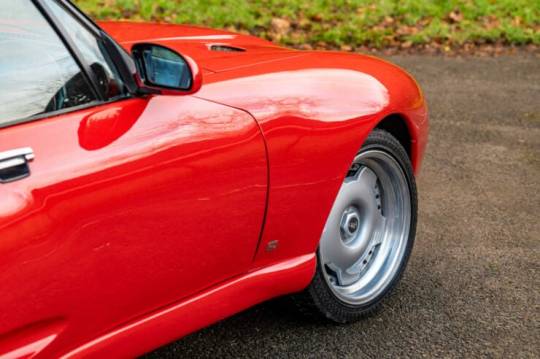
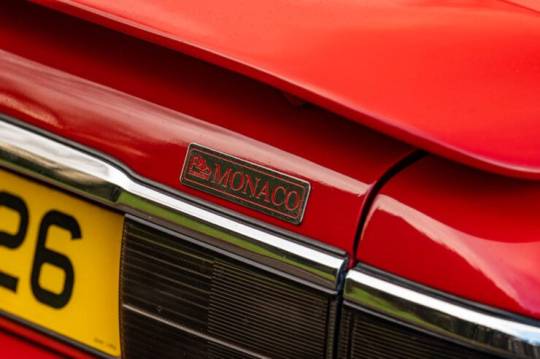


Jaguar XJR-S V12 “Monaco” (by PBB Desing).
This is the Jaguar XJR-S V12 “Monaco” by the team at PBB Design based out of Bristol in England. It’s believed that just 12 of them were made – today they remain a rare and highly desirable version of the high-performance XJS.
The Jaguar XJR-S was released in 1988 as the new top-of-the-line version of the XJS from Jaguar. It was fitted with the HE V12 engine that had been developed by JaguarSport, an entity owned 50/50 by Jaguar and TWR Group (Tom Walkinshaw Racing).The XJR-S was fitted with a widebody kit, uprated suspension and brakes, wider wheels and tires, and upgraded interiors, however most people’s attention was focused on what was under the hood. The JaguarSport HE V12 incorporated a slew of improvements over the stock engine and produced 318 bhp as a result.In late 1989 the engine was further upgraded and the displacement increased from 5,344 cc to 5,993 cc (6.0 liters). It was fitted with a Zytek fuel-injection and engine management system, a modified air intake system, a forged steel crankshaft, forged alloy pistons, and it had a compression ratio of 11.0:1.This newer V12 was capable of 328 bhp at 5,250 rpm and 365 lb ft of torque at 3,650 rpm, putting it up near the top of the class in the luxury sporting GT genre in the early 1990s.
PBB Design was founded by Paul Bailey in Bristol, England. Bailey had formerly worked in the aerospace industry before moving to Bristol-based Glenfrome Engineering, a company that build special versions of the Range Rover including longer wheelbase versions and a futuristic version called the Facet.
In the 1980s Glenfrome experimented with a long wheelbase version of the XJS, this is where Bailey had worked on the car for the first time, and where the kernel of the idea that would become the Monaco would form.
Bailey drew his own plans for the XJS, being very careful to keep his design drawings true to the exact scale of the Jaguar so that they could realistically be applied to the car.
Glenfrome would be dissolved in 1986 however Bailey knew he was onto something with his new design for the XJS, so he formed PBB Design (Paul Bailey Bristol) in 1987 and set to work. He originally looked into creating new steel body panels for the Monaco but eventually settled on fiberglass due to the low weight.
The original body needed to be significantly modified with the front and rear wheel arches cut back allowing for wider wheels and tires, and the headlight section needed to be cut away.
The fiberglass panels, or body kit, was then bonded over the top – the result was a much wider car that looked more like the earlier D-Type and E-Type family than the XJS ever did.
A set of 17 inch Compomotive split rims were then fitted along with suitably wide high-performance rubber, the suspension was rebuilt, the brakes were uprated, and clients had a choice of interior upgrades.
Under the hood the original XJR-S engine was considered amply powerful by some, those who wanted more power could opt for one of the fire-breathing Rob Beere Engineering-developed 7.3 liter version of the Jaguar V12.
Due to the high cost just 12 examples of the PBB Design Monaco were ever made, one of which was ordered by the Sultan of Brunei, and they attracted much attention from Jaguar circles when they rarely come up for public sale.
34 notes
·
View notes
Text
1981 Mazda RX-7
Gotta love a Mazda with a Wankel engine! Super sharp RX-7 just out from Johnny Lightning. Take a look!

View On WordPress
#1981 Mazda RX-7#1:64 scale#featured#ford ranger#Johnny Lightning#Motorcraft#Tom Walkinshaw Racing#tribute racer#TWR Racing#Wankel rotary engine
1 note
·
View note
Video
s p a . c l a s s i c . o n e by p e t e r m o o n s
Via Flickr:
j a g u a r . X J R - 8 . 1987 world sportscar championship j a g u a r . X J R - 1 2 . les 24 heurs du mans 1990 b r o k e n . t a b l e . i m a g e s
#sony#sony M5#spa-francorchamps#spa classic#belgique#belgië#belgien#belgium#jaguar#jaguar XJR-8#jaguar XJR-12#tom walkinshaw racing#silk cut#tom walkinshaw#tony southgate#raul boesel#eddie cheever#jan lammers#john watson#johnny dumfries#john nielsen#1987 world sportscar championship#world champions#martin brundle#alain ferté#david leslie#andy wallace#franz konrad#price cobb#eliseo salazar
1 note
·
View note
Text
RENAULT CLIO 3.0 V6 SPORT PHASE I: UM “ANIMAL” RARO E VICIANTE
Com Artur Cintra
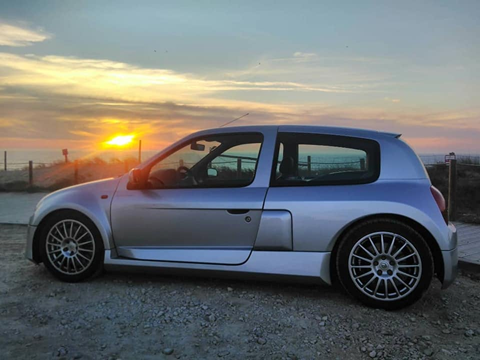
Artur Cintra apaixonou-se pelo fabuloso Clio V6 Phase I assim que o viu à venda na net. Daí até ter adquirido o raro desportivo da Renault não passaram 24 horas. Já lá vão mais de dois anos de uma relação intensa e, como o afortunado proprietário assume, viciante.
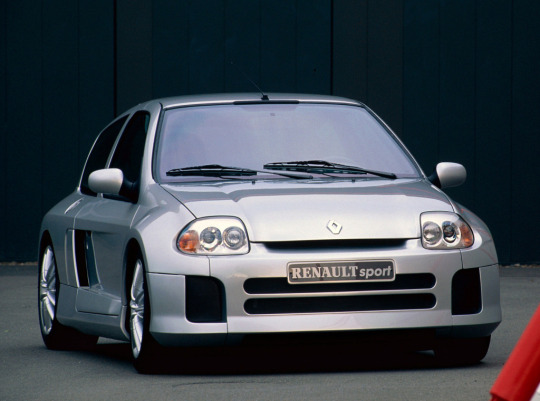
O Salão de Paris de 1998 teve um significado especial para a Renault, tendo sido um dos palcos escolhidos para a celebração do centenário da marca. Para vincar a ocasião, a Renault apresentou três novidades de peso, entra elas o fabuloso Clio Renault Sport V6 24V ainda em fase de concept. Mas a resposta do público foi tão entusiasta e avassaladora que a marca decidiu pedir um estudo prévio de desenvolvimento aos especialistas britânicos da TWR (Tom Walkinshaw Racing). O relatório confirmou que a execução e passagem à produção era possível e que os exigentes critérios de qualidade, segurança e dinamismo impostos pela Renault podiam ser atingidos na versão final.

A unidade que o Artur Cintra adquiriu em outubro de 2019 é um dos três Clio V6 Phase I vendidos novos em Portugal. Mal vi o anúncio na internet, disse para mim mesmo que este era para juntar a outros automóveis de coleção que já tinha. Vi o carro e no mesmo dia fui comprar e levantar ao stand. Quando o comprei, tinha 40 mil km, agora está com pouco mais de 43 mil km”.

No coração da “besta”, colocado no local onde deveriam estar os bancos traseiros, batia o 3.0 V6 atmosférico que a marca utilizava no Renault Laguna. Para ser montado no Clio, o V6 recebeu novos pistões, viu a taxa de compressão aumentada, as tomadas de admissão alargadas e o limite de rotações subiu para as 7100 rpm. Ligeiramente menos potente do que as versões de competição que corriam no Troféu, o V6 debita 230 cv de potência e 300 Nm de binário às 3750 rpm.

Segundo a marca, o Clio V6 Fase 1 é capaz de acelerar de 0 a 100 km/h em apenas 6,4 segundos e atingir uns anunciados 237 km/h. Associado ao poderoso V6 estava uma caixa PK6 manual de seis relações que derivava da já existente caixa de 5 velocidades, tendo esta sido profundamente alterada. O diferencial autoblocante oferecido de série ajudava a colocar os “cavalos” no asfalto e a ausência de um turbo tornava a resposta do V6 mais linear e progressiva, mas a combinação de uma curta distância entre eixos e a ausência de um sistema de controlo de tração garantiam que a condução do Clio V6 Fase 1 era sempre excitante e muito envolvente...
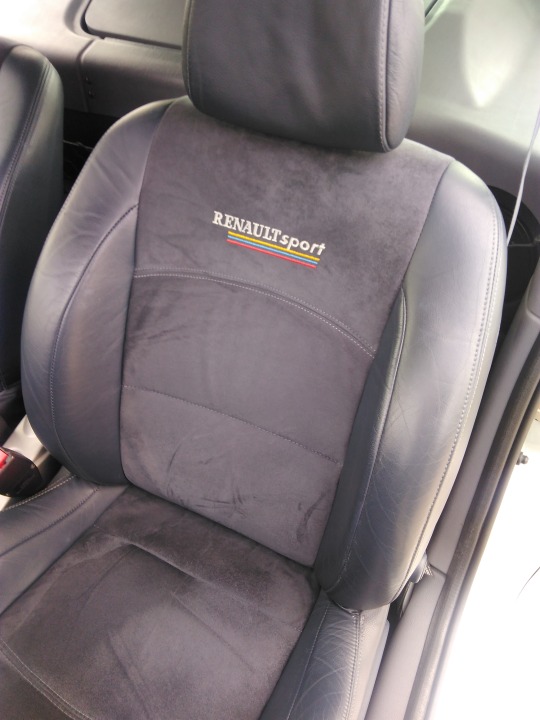
O Artur Cintra que o diga. “Para além de ter outras tantas qualidades, o Clio V6 é viciante de conduzir, tem um som incrível, mas exige bastante concentração e mãos/pés do condutor. Em situações limite é bom reagir rapidamente antes que a sobreviragem se torne imparável. Não é fácil de conduzir (muito) depressa e não perdoa erros de principiante, mas quando “dominado” é incrível”.
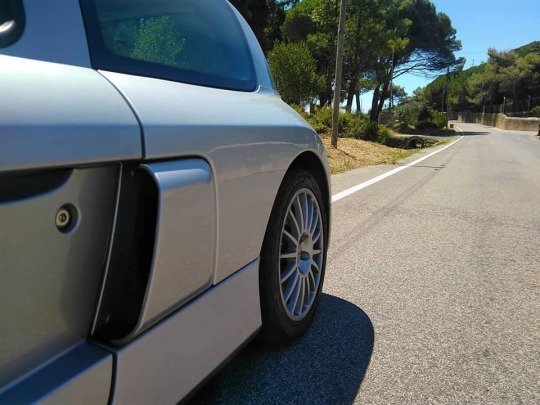
Face ao Clio “normal”, o V6 é 171 mm mais largo, 66 mm mais baixo, 38 mm maior na distância entre eixos e as vias dianteira e traseira eram, respetivamente, 110 mm e 138 mm mais largas. À imagem dos verdadeiros supercarros, o Clio V6 tinha pneus diferentes à frente e atrás: 205/50 ZR17” na dianteira e 235/45 ZR17” na traseira. As generosas e elegantes jantes OZ “Superturismo” de 17” também permitiram montar discos dianteiros ventilados de 330 mm que, pela primeira vez num automóvel de produção, eram mordidos por pinças AP Racing de 4 pistões.
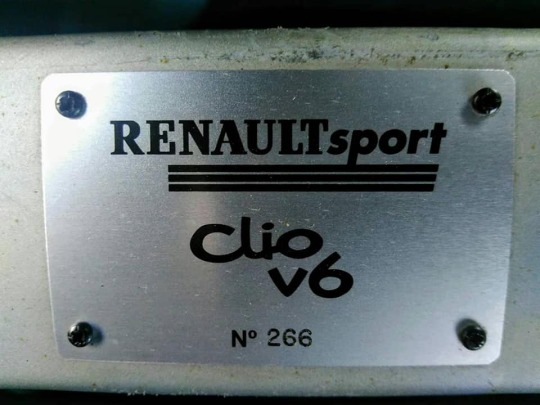
Para reforçar a exclusividade do Clio V6 “Phase 1”, todas as unidades foram construídas manualmente nas instalações da Tom Walkinshaw Racing (TWR) em Uddevalla na Suécia ao ritmo de, aproximadamente, 12 por dia. Assim, até ao lançamento do Clio V6 Phase 2, em agosto de 2003, a TWR produziu 1631 exemplares da primeira série, 256 destas com volante à direita.
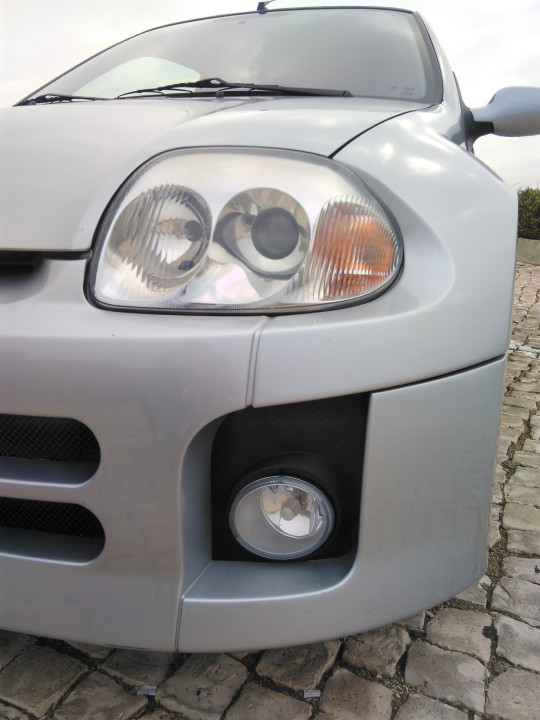
O Artur Cintra acredita que além de ser um “verdadeiro head-turner, o Clio V6 Sport nasceu como um futuro clássico e é, seguramente, um bom investimento. Para além destas três qualidades, este Renault tem um design que acho lindo”.

Aliás, devido à raridade, ao extravagante aspeto exterior e ao motor em posição central traseira, este feliz proprietário conta com evidente bom-humor duas das várias situações engraçadas pelas quais já passou com o seu Clio V6. “O carro como é de 2001 vai sempre, em setembro, à inspeção perto de minha casa e quando existe um colaborador novo fazem uma praxe pedindo-lhe que abra o capot para ver o motor. Como tem motor central e o mesmo se situa no espaço que seria ocupado pelos lugares traseiros o acesso é efetuado pela mala, apanhando desprevenidos os rookies. De uma outra vez, estava numa bomba a atestar o carro, vem um senhor na minha direção e dá-me os parabéns pelo trabalho que efetuei nas alterações deste Clio. Digo-lhe que é original e explico que é um Clio 3.0 V6 Sport de motor central, até lhe mostrei o carro ao pormenor, mas nem assim consegui convencer o senhor de que o carro era original.
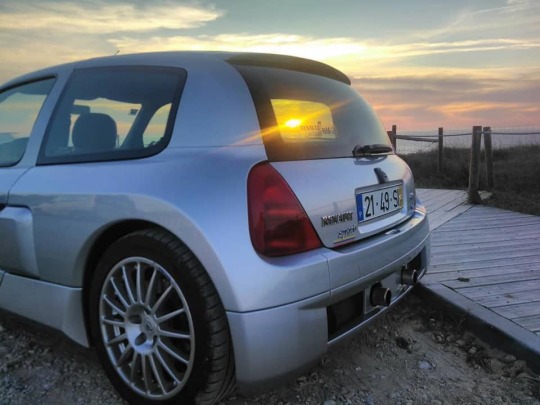
O reconhecimento do Artur Cintra pelo privilégio de ter em sua posse um automóvel tão “exótico” e especial é evidente na forma como se despede, fazendo questão de “agradecer à Renault por ter tido a coragem de produzir este automóvel, porque se não o tivesse feito eu não teria tido a oportunidade de usufruir das várias experiências e situações que já passei ao volante deste magnífico desportivo”.
4 notes
·
View notes